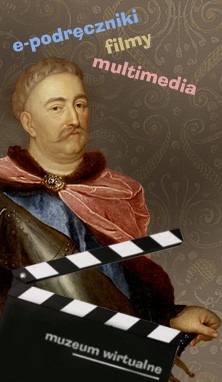The Nautilus Cup
karta katalogowa kolekcji
Rzemiosło artystyczne
Hans Ludwig Kienle the Younger
Ulm, Germany
2nd half of the 17th century
Gilt silver, ivory, almandines, amethysts, turquoises, olivines, nautilus shell
40 x 28,5 x 12,5 cm
Signature: goldsmith’s personal hallmark: HL.K
Wil.505
The nautilus vessel adorns one of the wardrobes in the Wardrobe (Royal Dressing Room) in Wilanów. The cup is composed of a goblet made of a polished shell of the sea snail (Latin: Nautilus), mounted in silver, richly decorated and featuring motifs of sea deities and creatures. The fashion for such vessels was prevalent in Europe during the sixteenth and seventeenth century. They were also sporadically produced in the eighteenth century and even in the following century. The most magnificent examples originated from German workshops, chiefly in Augsburg, Nürnberg and Bremen. In the seventeenth century, Gdańsk was another much valued production centre. Beautiful shells were obtained from the Indian Ocean and the Pacific, and brought to Dutch and Hanseatic ports by traders of the East India Company. The capacity of a goblet, depending on the size of the shell, oscillated from 0,5 kwarta (0,25-0,5 l.) to a garnec (1-4 l.), while its height reached 50-55 cm. The cups fulfilled a purely decorative function.
The Wilanów cup was executed by Hans Ludwig Kienle the Younger, a goldsmith from Ulm. The shell, mounted in silver, was supported by the sea deity Triton. According to Greek mythology, Triton was the son of Poseidon and Amphitrite and served the gods as a messenger. He was a member of the retinue of Poseidon, a counterpart of the entourage of Dionysius, composed of satyrs and nymphs. Triton calmed turbulent seas by blowing a conch shell. In art he is depicted as half-man and half-fish, blowing a shell or holding a conch and a trident.
Joanna Paprocka-Gajek
Polecane

Wilanów Top 15
The Wilanów Top 15 presents the most valuable, extraordinary and beautiful works of art from the Wilanów Palace collection. The exhibits originate from all over the world, from ancient Rome through 17th-century Japan to ateliers of the French masters. Their history reflects the lives and fate of people related to the Wilanów residence. Get acquainted with the exhibits, view and admire them only to rediscover them later in the palace interiors.

History of the collection
Already Jan III collected works of art and exquisite objects of everyday use. However, only a fraction of his collection …

Ribbed bottle
This bottle, a part of a set of coloured South German glassware mounted in gold plated silver at the turn …

















